“When diet is wrong, medicine is of no use. When diet is correct, medicine is of no need.”
― Ayurvedic Proverb
Imagine a world where ancient healing traditions and modern science unite—a synergy that bridges the timeless wisdom of Ayurveda with the precision of microcurrent therapy. This powerful combination isn’t just about managing symptoms; it’s about restoring the body’s natural ability to heal and thrive.
At the heart of this integrative approach is The Hache Protocol for Pain Resolution™, a groundbreaking system that helps individuals reclaim their health by addressing pain and inflammation at the source. By combining microcurrent therapy with holistic healing principles, it provides a structured, science-backed framework to support long-term wellness.
Ayurvedic medicine, often called the “science of life,” has guided humanity for over 5,000 years. Rooted in balance, harmony, and natural rhythms, Ayurveda offers profound insights into achieving holistic health. Meanwhile, microcurrent therapy enhances the body’s natural healing capacity through targeted bioelectrical stimulation. This combination isn’t just complementary—it’s transformative.
Let’s explore how these two powerful systems work together to create a more balanced, pain-free life…
Ayurveda: The Science of Balance and Energy
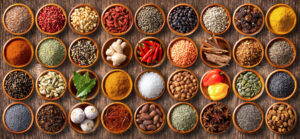
Ayurveda is more than a medical system—it’s a philosophy of life. At its core lies the concept of balance, which is achieved through harmonizing the three doshas: Vata, Pitta, and Kapha. These doshas govern everything from digestion to emotional well-being, and when one is out of balance, it can manifest as discomfort or illness.
Have you ever experienced sleepless nights, sudden irritability, or unexplained fatigue?
Ayurveda explains these as signals of doshic imbalances. For example, an excess of Vata energy may lead to anxiety or restlessness, while aggravated Pitta might cause inflammation or irritability.
Ayurveda aims to restore harmony through a variety of methods:
- Personalized Diets: Cooling foods may pacify Pitta, while warming, grounding meals stabilize Vata.
- Herbal Remedies: Concentrated botanicals like ashwagandha or turmeric are tailored to specific doshas.
- Lifestyle Practices: Daily routines such as yoga, pranayama (breath control), and meditation align the body with nature’s rhythms.
Ayurveda views symptoms not as isolated issues but as reflections of deeper imbalances. This broader perspective is especially relevant today when modern lifestyles—filled with processed foods, chronic stress, and sedentary habits—disrupt our natural harmony.
Top 20 Most Popular and Accessible Ayurvedic Plants
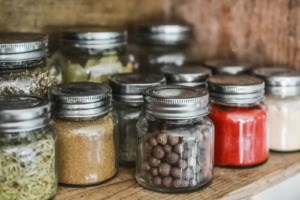
Ayurveda thrives on its vast library of healing plants, many of which are now celebrated globally for their health benefits. Below are 20 popular and accessible Ayurvedic plants, showcasing how nature’s remedies can support the mind, body, and spirit.
| Plant Name | Benefits | Part Used |
| Ajwain | Supports digestion and relieves bloating | Seeds |
| Aloe Vera | Cooling, soothing; aids skin health and digestion | Leaves |
| Amalaki | Rich in Vitamin C; supports immunity and rejuvenation | Fruit |
| Arjuna | Supports heart health and cardiovascular function | Bark |
| Ashwagandha | Adaptogen; manages stress and improves energy | Roots |
| Bhringraj | Promotes hair growth and scalp health | Leaves |
| Brahmi | Improves cognitive function and memory | Leaves |
| Daruharidra | Anti-inflammatory; antimicrobial; skincare | Roots, Bark |
| Ginger | Aids digestion; anti-inflammatory | Rhizome |
| Gotu Kola | Enhances memory; promotes well-being | Leaves |
| Guduchi | Immune-boosting; general health | Stems |
| Haritaki | Digestive aid; detoxification | Fruit |
| Neem | Antibacterial, antifungal; purifies blood | Leaves, Bark |
| Shatavari | Hormonal balance supports female reproductive health | Roots |
| Triphala | Digestive health; detoxification | Fruit (Combination) |
| Tulsi | Adaptogen supports immunity and respiratory health | Leaves |
| Turmeric | Anti-inflammatory; antioxidant | Rhizome |
| Yashtimadhu | Soothes respiratory and digestive systems | Roots |
| Bilva | Aids digestion; balances Vata dosha | Fruit |
| Manjistha | Blood purifier promotes skin health | Roots |
Each of these plants offers unique benefits and showcases Ayurveda’s ability to address health holistically, using natural remedies rooted in balance.
*Note: The information provided in this article is for educational and informational purposes only and is not intended as medical advice. Ayurvedic herbs and natural remedies can support overall well-being, but they should not replace professional medical treatment. Always consult with a qualified healthcare provider before starting any new herbal regimen, especially if you have existing health conditions, are pregnant or nursing, or are taking medications. Individual responses to herbal remedies may vary, and self-treatment without proper guidance may have unintended effects.
How to Use Ayurvedic Herbs and Spices: Turmeric-Infused Sourdough Bread Recipe
A Nourishing Blend of Anti-Inflammatory Power and Gut Health

Ayurveda has long understood that food is medicine, and turmeric is one of the most powerful natural healers out there. Packed with anti-inflammatory and antioxidant properties, it’s a game-changer for anyone dealing with chronic pain or autoimmune conditions. But here’s the kicker—gut health is just as crucial for reducing inflammation and supporting overall well-being.
That’s where sourdough comes in. Thanks to its natural fermentation, sourdough helps balance your microbiome, improve digestion, and even make gluten more tolerable for many people. This recipe brings ancient Ayurvedic wisdom and modern science together in one nutrient-packed, flavorful loaf. If you’re looking for a simple way to support your health, this is it. Enjoy!
Ingredients
- 500g (4 cups) bread flour
- 100g (¾ cup) whole wheat flour
- 300g (1¼ cups) water (room temperature)
- 100g (½ cup) active sourdough starter
- 10g (2 teaspoons) salt
- 2 teaspoons ground turmeric
- Optional: sesame or poppy seeds for topping
Instructions
- Mix the Dough – Combine flour, turmeric, and salt in a bowl. In a separate bowl, dissolve the sourdough starter in water, then mix with dry ingredients until a shaggy dough forms. Cover and rest for 30 minutes.
- Knead the Dough – Knead by hand or use the stretch-and-fold method until smooth and elastic. (A stand mixer on low for 6 minutes works too.)
- First Rise (Bulk Fermentation) – Place dough in a greased bowl, cover, and let rise for 4–6 hours. Stretch and fold every 30 minutes for the first 2 hours.
- Shape the Dough – Form into a round or oval loaf. Let it rest for 20–30 minutes, then reshape as needed. Place seam-side up in a floured bread basket or on parchment paper.
- Final Proof – Cover and proof for 2–3 hours at room temperature or overnight in the fridge for better flavor.
- Bake the Bread – Preheat oven to 450°F (230°C), heating a Dutch oven inside if using one. Score the top of the loaf, bake covered for 25 minutes, then uncovered for another 20 minutes until golden brown.
- Cool and Enjoy – Let cool for at least an hour before slicing for the best texture.
This isn’t just bread—it’s a simple, delicious step toward better health. Enjoy!
Microcurrent Therapy: Energy Healing for the Modern Age

Microcurrent therapy is like a tune-up for your body’s bioelectric systems. By using low-level electrical currents that mimic the body’s natural bioelectricity, this therapy helps:
- Stimulate tissue repair.
- Improve circulation and oxygenation.
- Reduce inflammation and pain.
Think of it as a way to recharge your cells. Just as Ayurveda focuses on the balance of prana—the vital life energy—microcurrent therapy restores harmony by reactivating the body’s natural healing abilities.
When cells are damaged, their electrical communication is disrupted. Microcurrent therapy “recharges” these cells, helping them function optimally. For example, someone with chronic pain might use microcurrent therapy to target inflamed joints while also incorporating Ayurvedic anti-inflammatory herbs like turmeric. Together, these approaches tackle both the symptoms and root causes of pain.
The Perfect Synergy: Ayurveda and Microcurrent Therapy
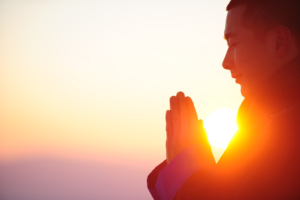
One of Ayurveda’s unique contributions is its focus on marma points—key energy centers in the body similar to acupuncture points. Stimulating these points releases energy blockages and restores vitality. When paired with microcurrent therapy, marma point stimulation becomes even more precise and effective.
For instance, applying microcurrent therapy to marma points related to digestion while also following an Ayurvedic diet tailored to your dosha can provide holistic relief for conditions like bloating or sluggish digestion.
Both Ayurveda and microcurrent therapy offer powerful solutions for managing stress and chronic pain holistically. In my recent conversation with Karta Purkh Singh Khalsa on my podcast, we explored how these two healing modalities work together—how Ayurvedic practices like pranayama can be amplified with microcurrent vagus nerve stimulation to promote deep relaxation, reduce stress, and enhance overall well-being. This approach doesn’t just address physical symptoms; it gets to the root of emotional and energetic imbalances, providing a truly integrative path to healing.
Curious to learn more? Listen to the full episode here:
Practical Applications of Ayurveda and Microcurrent Therapy
Bringing together Ayurveda and microcurrent therapy isn’t about choosing one over the other—it’s about creating a synergy that amplifies the strengths of both. Whether you’re looking for faster recovery, deeper relaxation, or better digestion, integrating these two systems can help restore balance on a physical, energetic, and cellular level.
Here’s how you can harness the best of both approaches for optimal health:
- Post-Surgical Recovery: Speed up healing by pairing Ayurvedic oils like Maha Narayan with microcurrent protocols designed to reduce inflammation and break down scar tissue.
- Digestive Health: Support gut function by incorporating turmeric-rich meals and Ayurvedic herbs alongside the Elimination Assistance Protocol for microcurrent therapy.
- Stress and Anxiety Relief: Enhance relaxation by combining grounding Ayurvedic practices like meditation and breathwork with vagus nerve stimulation using the Avazzia Life Evolution or Avazzia Life Genesis II.
The real strength of this approach lies in its adaptability. Whether you’re managing a chronic condition like arthritis, recovering from an injury, or simply striving for greater vitality, Ayurveda and microcurrent therapy provide a highly customizable path to wellness. By blending ancient wisdom with cutting-edge science, you create a holistic, individualized strategy for long-term health and resilience.
Redefining Wellness: Bridging Ancient Wisdom with Modern Healing
Ayurveda reminds us that health isn’t just about treating symptoms—it’s about aligning with the rhythms of nature and restoring balance from within. Microcurrent therapy, on the other hand, fine-tunes the body’s bioelectrical systems, accelerating healing and optimizing function. Together, they form a powerful, holistic approach to well-being, merging time-tested wisdom with cutting-edge science.
The beauty of this synergy is that it’s accessible to everyone. Start with small, intentional shifts—incorporate an Ayurvedic herb into your daily routine, introduce microcurrent therapy to target discomfort, or explore how these modalities can work together to enhance your overall health. When we combine ancient traditions with modern technology, we unlock a deeper level of healing—one that is both sustainable and transformative.
Ready to take the next step? Visit the Pain Free Living Lab for expert insights, real success stories, and the latest edition of Pain Free Living Magazine—where we first featured this Turmeric-Infused Sourdough Bread recipe. If you love discovering holistic recipes and cutting-edge pain relief strategies, be sure to subscribe so you never miss an issue. Your journey to balance, vitality, and a pain-free life starts today!

